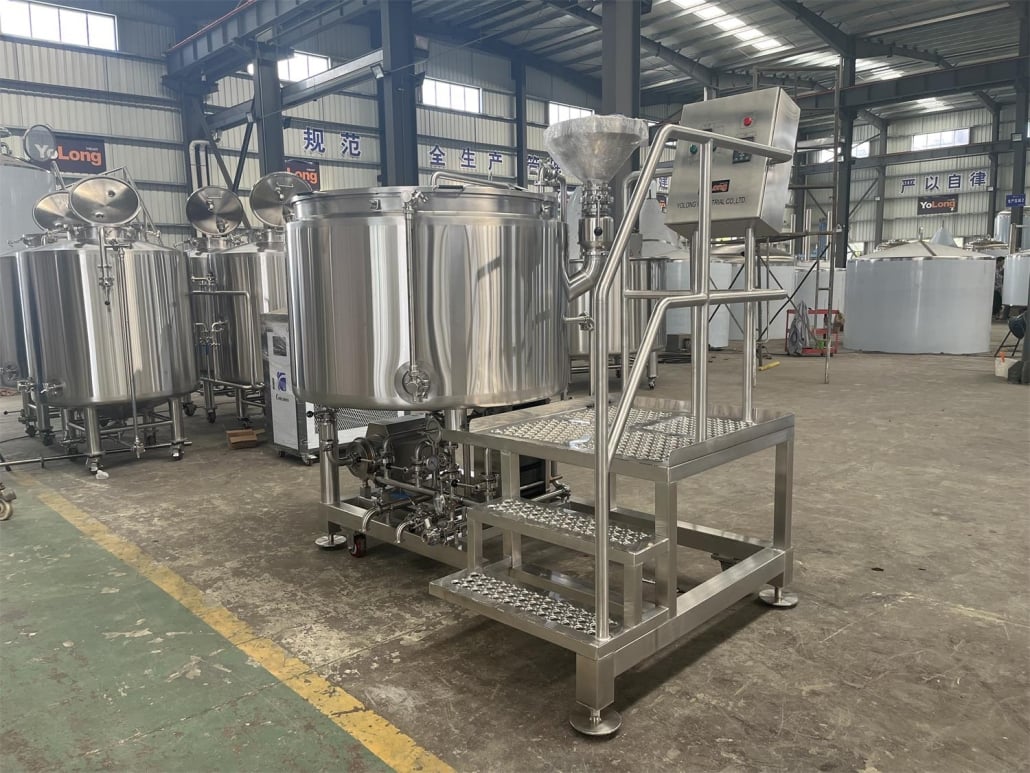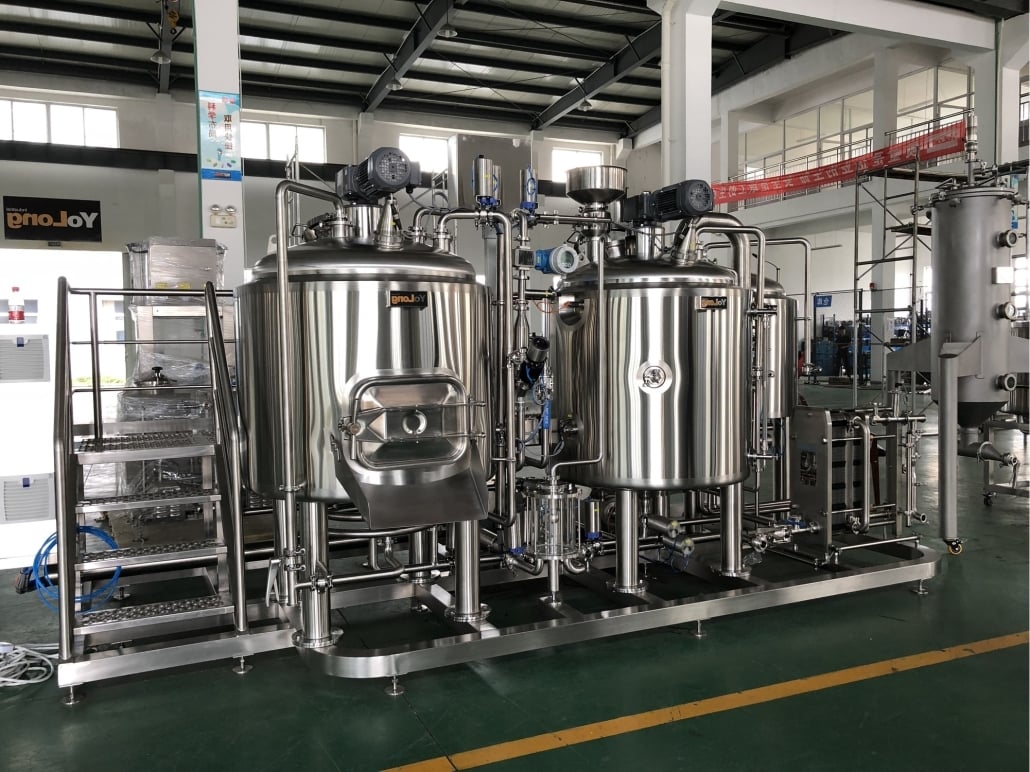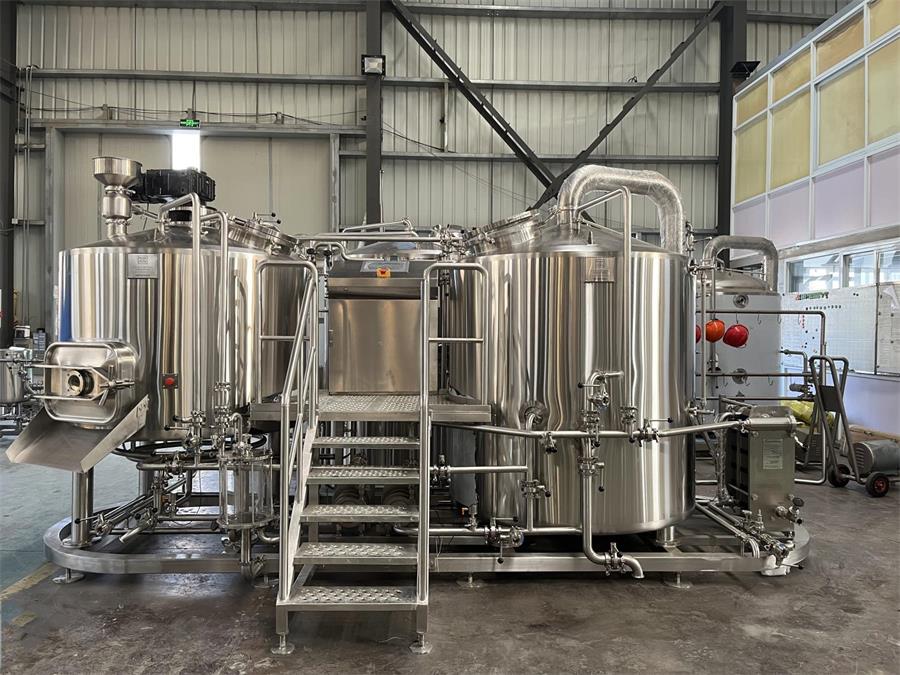Nano Brewery Equipment
Nano breweries are becoming increasingly popular due to their manageable size, lower startup costs, and the potential to create unique craft beers. Whether you’re a homebrewer looking to scale up or an entrepreneur entering the craft beer market, understanding the right equipment is crucial. This comprehensive guide will delve into everything you need to know about nano brewery equipment, from the types of equipment needed to the brewing process, customization options, and tips for choosing suppliers. Let’s dive in!
Overview: Key Details of Nano Brewery Equipment
Nano breweries typically produce small batches of beer, ranging from one to three barrels per brew cycle. The equipment used in nano breweries is smaller than that used in microbreweries and commercial breweries but still capable of producing high-quality craft beer. Key details to consider when setting up a nano brewery include the type of equipment, capacity, design, layout, customization options, and cost.
Guide to Nano Brewery Equipment
Brewing System Essentials
Setting up a nano brewery involves several pieces of equipment, each playing a vital role in the brewing process. Here’s a detailed overview:
Brewing Kettles and Mash Tuns
Brewing kettles and mash tuns are essential for the brewing process. The brewing kettle is where the wort (the liquid extracted from the mashing process) is boiled, while the mash tun is used for mixing the malted barley with hot water to extract sugars.
Fermentation Tanks
Fermentation tanks are where the wort is fermented with yeast to produce alcohol and carbon dioxide. These tanks need to be temperature-controlled to ensure a consistent fermentation process.
Cooling System
A cooling system is essential for quickly lowering the temperature of the wort after boiling to prepare it for fermentation. This typically involves a heat exchanger or wort chiller.
Pumps and Piping
Pumps and piping are used to transfer liquids between different stages of the brewing process. It’s important to have reliable and food-grade quality equipment to maintain the integrity of the beer.
Cleaning and Sanitation Equipment
Proper cleaning and sanitation equipment are crucial to prevent contamination and ensure the production of high-quality beer. This includes CIP (Clean-in-Place) systems, sanitizers, and cleaning brushes.
Control Systems
Modern nano breweries often use automated control systems to monitor and manage the brewing process, ensuring consistency and efficiency.

Types of Nano Brewery Equipment
| Equipment Type | Details |
|---|---|
| Brewing Kettles | Used for boiling wort; available in various sizes and materials (e.g., stainless steel). |
| Mash Tuns | Used for mashing grains with water; can be insulated for better temperature control. |
| Fermentation Tanks | Vessels for fermenting wort into beer; available in different sizes and configurations. |
| Cooling Systems | Includes heat exchangers or wort chillers for rapid cooling of wort. |
| Pumps and Piping | Essential for transferring liquids; should be food-grade and corrosion-resistant. |
| Cleaning and Sanitation | Includes CIP systems, sanitizers, and cleaning brushes to maintain hygiene and quality. |
| Control Systems | Automated systems for monitoring and managing the brewing process. |
Brewing Process Explained
The brewing process in a nano brewery is similar to that in larger breweries but on a smaller scale. Here’s a step-by-step explanation:
1. Mashing
Mashing involves mixing crushed malt (usually barley) with hot water in a mash tun. This process activates enzymes that convert starches into fermentable sugars.
2. Lautering
After mashing, the mixture (now called mash) is transferred to a lauter tun, where the liquid wort is separated from the spent grain.
3. Boiling
The wort is then boiled in the brewing kettle, typically for 60 to 90 minutes. During this stage, hops are added to impart bitterness, flavor, and aroma to the beer.
4. Cooling
The hot wort is rapidly cooled using a heat exchanger or wort chiller to a temperature suitable for fermentation.
5. Fermentation
The cooled wort is transferred to fermentation tanks, where yeast is added. The yeast ferments the sugars, producing alcohol and carbon dioxide.
6. Conditioning
After primary fermentation, the beer may undergo a conditioning phase, where it matures and develops its final flavor profile.
7. Packaging
Finally, the beer is packaged in bottles, cans, or kegs for distribution and consumption.
Nano Brewery Equipment Capacity, Space, Design, and Customization
When setting up a nano brewery, it’s essential to consider the capacity, space requirements, design, layout, and customization options. Here’s a detailed table:
| Parameter | Details |
|---|---|
| Capacity | Nano breweries typically have a capacity of 1-3 barrels per brew cycle. It’s important to choose equipment that matches your production goals. |
| Space Requirements | The space needed for a nano brewery varies based on the equipment and production scale. Generally, a small commercial space or a dedicated area in a home can suffice. |
| Design and Layout | Efficient design and layout are crucial for workflow. Equipment should be arranged to minimize movement and maximize efficiency. |
| Customization Options | Many suppliers offer customization options for equipment to suit specific brewing needs, including size, material, and automated features. |
Suppliers and Price Range of Nano Brewery Equipment
Choosing the right supplier is critical to getting quality equipment at a reasonable price. Here’s a detailed look at some potential suppliers and the price ranges you can expect:
| Supplier | Price Range | Details |
|---|---|---|
| Blichmann Engineering | $5,000 – $20,000 | Known for high-quality brewing systems and innovative designs. |
| Ss Brewtech | $3,000 – $15,000 | Offers a wide range of brewing equipment with a focus on durability and performance. |
| MoreBeer | $2,000 – $10,000 | Provides affordable options for homebrewers scaling up to nano brewing. |
| Spike Brewing | $4,000 – $18,000 | Specializes in customizable brewing systems tailored to specific needs. |
| Stout Tanks and Kettles | $5,000 – $25,000 | Offers a variety of brewing equipment, including turnkey systems and custom solutions. |
Installation, Operation, and Maintenance of Nano Brewery Equipment
Proper installation, operation, and maintenance are key to running a successful nano brewery. Here’s a detailed table with tips and guidelines:
| Aspect | Details |
|---|---|
| Installation | Professional installation is recommended to ensure equipment is set up correctly and safely. Consider hiring a technician with experience in brewery equipment. |
| Operation | Familiarize yourself with the operation manuals and best practices for each piece of equipment. Regular training for staff can also help maintain efficiency and safety. |
| Maintenance | Regular maintenance is crucial to prevent breakdowns and ensure longevity. This includes cleaning, sanitizing, and periodic inspections of all equipment. |
Choosing the Right Supplier for Nano Brewery Equipment
Selecting a supplier for your nano brewery equipment is a crucial decision that can impact your brewing success. Here are some factors to consider:
| Factor | Details |
|---|---|
| Quality | Ensure the supplier offers high-quality, durable equipment that meets industry standards. |
| Reputation | Look for suppliers with positive reviews and a good reputation in the brewing community. |
| Customization Options | Choose suppliers that offer customization options to tailor the equipment to your specific needs. |
| Support and Service | Consider suppliers that provide excellent customer support and after-sales service, including installation, training, and maintenance. |
| Price | Compare prices from different suppliers to ensure you’re getting good value for your investment. |
Pros and Cons of Nano Brewery Equipment
Understanding the advantages and limitations of nano brewery equipment can help you make an informed decision. Here’s a comparison:
| Aspect | Advantages | Limitations |
|---|---|---|
| Size | Compact and suitable for small spaces; easier to manage and clean. | Limited production capacity compared to larger systems. |
| Cost | Lower startup costs compared to microbreweries and commercial breweries. | Can still be a significant investment, especially for high-quality or customized equipment. |
| Flexibility | Allows for experimental brewing and frequent recipe changes. | May require more manual labor and oversight. |
| Scalability | Ideal for starting small and scaling up gradually. | Scaling up may require significant additional investment in new equipment. |
| Customization | Many suppliers offer customizable options to fit specific brewing needs. | Custom equipment can be more expensive and have longer lead times. |

FAQ
| Question | Answer |
|---|---|
| What is a nano brewery? | A nano brewery is a small-scale brewery that produces beer in small batches, typically 1-3 barrels. |
| How much does it cost to start a nano brewery? | Startup costs can range from $10,000 to $100,000 or more, depending on the equipment and setup. |
| What equipment do I need for a nano brewery? | Essential equipment includes brewing kettles, mash tuns, fermentation tanks, cooling systems, and more. |
| How much space do I need for a nano brewery? | Space requirements vary, but a small commercial space or a dedicated area in a home can suffice. |
| Can I customize my nano brewery equipment? | Yes, many suppliers offer customization options to meet specific brewing needs. |
| What are the advantages of a nano brewery? | Advantages include lower startup costs, flexibility in brewing, and the ability to experiment with recipes. |
| What are the limitations of a nano brewery? | Limitations include smaller production capacity and the potential for higher labor costs. |
Conclusion
Starting a nano brewery can be a rewarding venture, allowing you to create unique craft beers on a manageable scale. By understanding the essential equipment, the brewing process, and the factors to consider when choosing suppliers, you can set yourself up for success. Remember to prioritize quality, efficiency, and proper maintenance to keep your brewery running smoothly. Cheers to your brewing journey!
This comprehensive guide has aimed to provide a detailed, SEO-optimized overview of nano brewery equipment, ensuring you have all the information needed to start or scale your brewing operation. If you have any more questions or need further assistance, feel free to reach out.
Share this entry
Interested in learning more about Brewing Systems including additional details and pricing information? Please use the form below to contact us!
YOLONG BREWERY EQUIPMENT FAQS
- Commercial Brewery / Craft Brewery / Microbrewery / Nanobrewery
- What is The Difference Between Craft Beer and Industrial Beer?
- The Bespoke Differences In Custom Brewing Systems
- Everything You Need to Know About Kettle Souring
- How to Choose Brewing Equipment for Your business?
- How To Choose The-Best Partner To Build Your Commercial Microbrewing System?
- Two Detection Sensors That You Need To Use In Your Brewhouse System
- Remote Control Applications in Brewing Equipment/How does it work?
- How To Clean Your Brand New Brewery Tanks?

